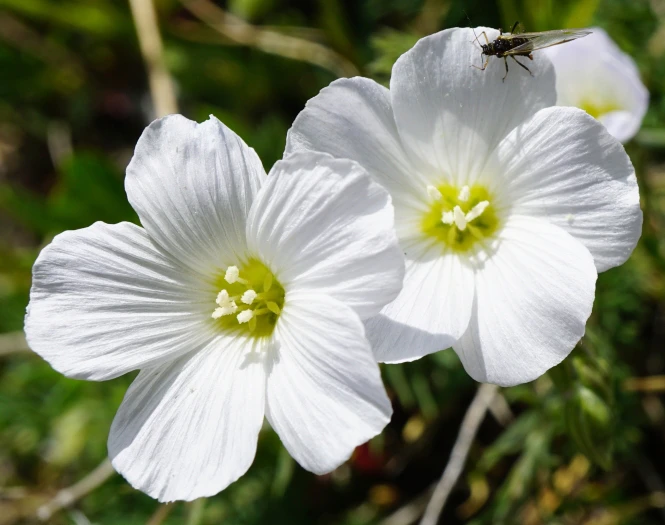Alpine Flax
(Linum alpinum)
Alpine Flax (Linum alpinum)
/
/

Patrick Hacker
CC BY 4.0
Image By:
Patrick Hacker
Recorded By:
Copyright:
CC BY 4.0
Copyright Notice:
Photo by: Patrick Hacker | License Type: CC BY 4.0 | License URL: http://creativecommons.org/licenses/by/4.0/ | Rights Holder: Patrick Hacker | Publisher: iNaturalist | Date Created: 2021-06-15T14:18:42-07:00 |

























Estimated Native Range
Climate Requirements for Lorain, Ohio
| This Plant | Your Site | Plant Suitability for Your Location | ||
|---|---|---|---|---|
| • Precipitation | 9" - 91" | 36" | Aquatic | Aquatic |
| • High Temp. | 34°F - 91°F | 84°F | Your summer temperatures are normal for this plant. | Excellent |
| • Low Temp. | 2°F - 44°F | 18°F | Your winter temperatures are normal for this plant | Excellent |
This plant should grow well at your location with about N inches per year (Y minutes per month) of irrigation.
Summary
Linum alpinum, commonly known as Alpine Flax or Blue Mountain Flax, is a perennial herb native to the high-altitude environments of the European Alps and the Pyrenees, where it thrives in alpine meadows and on rocky slopes. This plant exhibits a moderate growth rate and typically reaches a height and width of 0.5-1 feet (0.15-0.3 meters). Alpine Flax is characterized by its delicate, narrow leaves and striking blue flowers, which bloom profusely in the summer and are highly ornamental. The flowers’ showiness makes them a highlight in rock gardens and alpine collections.
Alpine Flax is valued for its ease of maintenance and its ability to adapt to the challenging conditions of high-altitude gardening. It is often used in rock gardens, as a border plant, or in wildflower meadows where its vibrant blue flowers can create a stunning visual impact. It requires full sun exposure to flourish and prefers well-drained loam or sandy soils. While it tolerates medium amounts of water, good drainage is crucial to prevent root rot. Alpine Flax is not known for significant disease or pest problems, but it can be sensitive to overly wet conditions. It is not typically invasive and is appreciated for its non-aggressive growth habit.CC BY-SA 4.0
Alpine Flax is valued for its ease of maintenance and its ability to adapt to the challenging conditions of high-altitude gardening. It is often used in rock gardens, as a border plant, or in wildflower meadows where its vibrant blue flowers can create a stunning visual impact. It requires full sun exposure to flourish and prefers well-drained loam or sandy soils. While it tolerates medium amounts of water, good drainage is crucial to prevent root rot. Alpine Flax is not known for significant disease or pest problems, but it can be sensitive to overly wet conditions. It is not typically invasive and is appreciated for its non-aggressive growth habit.CC BY-SA 4.0
Plant Description
- Plant Type:
- Height: 0.5-1 feet
- Width: 0.5-1 feet
- Growth Rate: Moderate
- Flower Color: Blue
- Flowering Season: Summer
- Leaf Retention: Deciduous
Growth Requirements
- Sun: Full Sun
- Water: Medium
- Drainage: Fast, Medium
Common Uses
Bee Garden, Border Plant, Butterfly Garden, Low Maintenance, Rock Garden
Natural Habitat
Native to high-altitude environments of the European Alps, thriving in alpine meadows and on rocky slopes
Other Names
Common Names: Blue Mountain Flax
Scientific Names: Linum alpinum , Adenolinum pyrenaeum , Linum alpinum subsp. montanum , Linum alpinum var. alpicola , Linum alpinum var. genuinum , Linum austriacum var. alpinum , Linum montanum , Linum perenne var. alpinum
GBIF Accepted Name: Linum alpinum